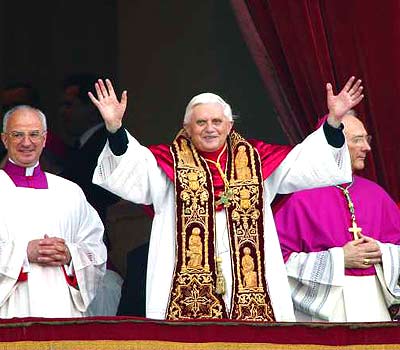Human sacrifice and other thrill rides
Mel’s Merry Messianic Movie Missionaries: An Analysis of Apocalypto and Other Silver Screen SavageryBy Tim Mitchell
If Gibson learned anything from his previous filmmaking experience it would be that if you are going to demonize a minority group, pick one that the mainstream public knows and cares so little about. The portrayal of ancient Mayans in Apocalypto as violent heathens in need of salvation not only fits with Gibson’s conservative Catholic understanding of the world, since the populations of modern-day Central and South America are overwhelmingly Catholic due to the religious affiliation of their European conquerors, but with his own upbringing in Australia, a country with its own brutal colonial past. He also found a way around the concept of “white guilt.” Instead of risking the arousal of remorseful feelings among his predominantly Caucasian audience by showing cowboys or conquistadores killing Indians, he chose instead to show Indians killing Indians—or, to be more exact, show many Indians killing many, many Indians, and with many, many, many more Indians cheering them on. The Western genre of filmmaking may no longer be the blockbuster franchise it was before, but it appears that portraying Indians as brutal, bloodthirsty savages from a primitive, bygone era is still considered acceptable in mainstream filmmaking. While Gibson has claimed before that his movie is a critique of the Bush administration, his movie clearly exploits the white American fear of exotic, swarthy foreigners with unusual languages and violent, inexplicable religious beliefs to add appeal to his movie—the same kind of xenophobia Bush has utilized in promoting his anti-Arab, anti-Muslim “War on Terror” that has resulted in countless cases of profiling, harassment and incarceration on the basis of race and religion.
To put the figurative shoe on the other foot, imagine if a violent, gory movie was made that portrayed a large medieval Catholic community as a group of child-molesting, Jew-torturing, witch-burning, crusading holy warriors who relished gruesomely executing thousands of innocent people in Vatican Square, and that “a new beginning” for the Catholics was provided at the end of the film by the arrival of several Scientologists. (Yes, I know—witch burnings ended centuries before the beginning of Scientology, but if you use the same kind of sloppy chronology that Gibson uses in Apocalypto, Scientology and church-sanctioned witch killings could easily co-exist.) Also imagine if this film was written and directed by one of Hollywood’s more well-known and controversial Scientologists—Tom Cruise, for example. Do you think that the mainstream media would give Cruise’s movie such a free pass, calling it at best a “thrill-ride” and at worst a “blatantly sadistic spectacle,” and not make connections between Cruise’s religious beliefs and the ending of his film? Just think of how the Pope would respond to hearing that Cruise, in his search for “historical accuracy,” used a cast of no-name Catholic actors who he had to train to act like medieval Catholics to fit the movie, to “knock the 21st century right out of them”? Somehow, I doubt Catholics like Gibson would view such a film as an “inspiration to Catholic actors who aspire to perform relevant roles in the film industry.”


5 comments:
Your article reads ok, and makes some good points. But, why did you have to drag my religion, Scientology (a non-theocentric, not Christ-based empirical philosophy), into your tirade against Apocalypto?
Was it simply a thirst for keywords?
It has NOTHING to do with the issue, and seems a gratuitous slap at something you don't understand.
Sincerely,
Greg
Scientologist and proud of it
http://www.liveandgrow.org
Tim Mitchell wrote the article, not me. I don't know why he used Scientology, but I think the contrast between Catholicism and Scientology worked well as an analogy.
As for why I quoted that part of Tim's article, it was because it made a key point. I'm not clever enough to choose excerpts for their keyword value in Google.
Again, I'd say it was an analogy, not a satire. Whether Scientology is a genuine religion or not, the point was clear. The analogy worked as it was supposed to.
a·nal·o·gy –noun, plural -gies.
1. a similarity between like features of two things, on which a comparison may be based: the analogy between the heart and a pump.
Not all analogies are satires and not all satires are analogies. Mitchell used an analogy--perhaps one with satirical overtones--and it did the job. Did anyone not get the point when Mitchell wrote that Catholicism is to the Maya religion as Scientology is to Catholicism?
If people got the point, the analogy made sense and thus worked. So getting the point is central to the issue, not tangential or irrelevant.
Re "Catholicism to the Maya religion is NOT what Scientology is to Catholicism": In a broad sense, yes it is. We're talking about a radical shift in paradigms from one belief system to another. Going from the spiritual mysteries of Catholicism to the rational technocracy or social fascism of Scientology is just such a paradigm shift. In terms of philosophical revolutions, it's roughly equivalent to the huge leap between the Maya religion and Catholicism.
Post a Comment